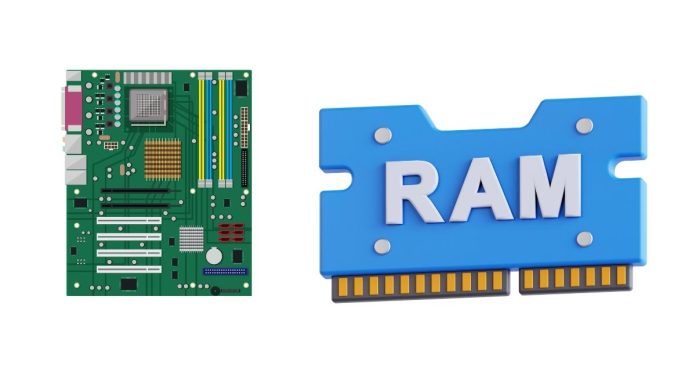How to Check RAM in Linux
RAM (Random Access Memory) is a crucial resource for the performance of any system, and Linux offers several methods to check the amount of available RAM on your system. Whether you’re troubleshooting performance issues, monitoring system health, or just curious, knowing how to check your system’s memory is essential. This guide will walk you through the most common methods to check RAM on a Linux system.
1. Using the free Command
The free command is one of the most widely used tools for checking system memory in Linux. It provides a simple and clear overview of the total, used, free, and shared memory, as well as the swap space.
Command:
free -h
Explanation:
- The
-hflag makes the output human-readable (e.g., in MB or GB). - The output will show:
- total: Total available memory.
- used: Memory currently used.
- free: Unused memory.
- shared: Memory used by tmpfs.
- buffers/cache: Memory used for file buffers and caches.
- available: Memory available for new processes, considering cached data.
Sample Output:
total used free shared buff/cache available
Mem: 16Gi 4.1Gi 7.6Gi 1.0Mi 4.2Gi 11Gi
Swap: 4.0Gi 0B 4.0Gi
2. Using the top Command
The top command is a real-time monitoring tool that shows the current memory usage along with other system stats like CPU usage and running processes. It is useful for tracking memory usage over time.
Command:
top
Once inside the top command interface, look at the top part of the output under the “Mem” section to check memory details.
Sample Output:
MiB Mem : 16004.0 total, 4183.4 used, 7597.5 free, 1012.1 buffers
Here you can see the total, used, and free memory as well as buffers.
You can press q to exit the top command.
3. Using the htop Command
For a more interactive and user-friendly version of top, you can install and use htop. It provides a colorful and easy-to-read display of memory usage, with more detailed information about running processes.
Install htop (if not installed):
sudo apt install htop # For Ubuntu/Debian
sudo yum install htop # For CentOS/RHEL
sudo dnf install htop # For Fedora
Command:
htop
Once inside htop, you’ll see memory and CPU usage presented in a graphical format. It’s easy to spot how much memory is being used, and it’s also more interactive than top.
4. Using the /proc/meminfo File
The /proc/meminfo file contains detailed information about the system’s memory usage. You can view this file directly to check more in-depth details.
Command:
cat /proc/meminfo
Explanation:
This will provide a list of key-value pairs, including:
- MemTotal: Total physical RAM.
- MemFree: Unused physical RAM.
- Buffers: Memory used for file buffers.
- Cached: Memory used for the cache.
- SwapTotal: Total swap space.
- SwapFree: Free swap space.
Sample Output:
MemTotal: 16302140 kB
MemFree: 7896040 kB
MemAvailable: 10730244 kB
Buffers: 118876 kB
Cached: 5641048 kB
SwapTotal: 4194300 kB
SwapFree: 4194300 kB
5. Using the vmstat Command
The vmstat command gives a detailed report about system memory, processes, I/O, and CPU activity. It’s useful for understanding how the memory is being utilized over time.
Command:
vmstat -s
Explanation:
The -s option displays a summary of memory statistics. In the output, look for fields like:
- total memory: Total RAM.
- free memory: Unused memory.
- buffer memory: Memory used by buffers.
- swap memory: Total swap space.
6. Using the dmesg Command
The dmesg command prints the boot-time messages, including hardware and memory information. This is useful if you want to see detailed memory configuration and how much RAM is detected at boot.
Command:
dmesg | grep -i memory
Explanation:
This command filters the dmesg output to show only lines that contain the word “memory.” It will include the RAM size detected by the system during boot.
7. Using the lshw Command
The lshw command gives a comprehensive listing of hardware information, including RAM.
Install lshw (if not installed):
sudo apt install lshw # For Ubuntu/Debian
sudo yum install lshw # For CentOS/RHEL
sudo dnf install lshw # For Fedora
Command:
sudo lshw -class memory
Explanation:
This command will provide detailed information about the system’s memory hardware, including the total amount of RAM, the type of memory, and the memory speed.
Sample Output:
*-memory
description: System Memory
physical id: 2
size: 16GiB
capacity: 16GiB
Conclusion
Checking RAM usage in Linux is simple and can be done using a variety of tools. From basic commands like free to more advanced tools like htop and lshw, Linux provides a flexible and comprehensive way to monitor memory. Whether you are debugging performance issues or just keeping an eye on system health, these methods will give you the information you need.
By mastering these commands, you’ll have a solid understanding of how much memory your system has, how it’s being used, and whether there are any performance bottlenecks. Happy monitoring!


